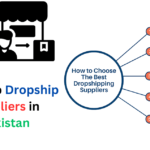Ecommerce, or electronic commerce, has grown a lot since 1994. That’s when Sting’s album was sold online, starting online retail. Today, ecommerce sales are expected to hit over $7 trillion by 2026. This shows how much online shopping has grown.
An ecommerce business is simple. It’s about buying and selling things online. With online platforms and tools, businesses can sell to people all over the world. This is great for new and small businesses. Knowing about ecommerce is key for success online.
Understanding What is Ecommerce Business in Today’s Digital Age
Some of the benefits of ecommerce include:
- Increased reach and accessibility
- Reduced startup costs
- Improved customer experience
The Evolution of Online Commerce
The ecommerce market is expected to hit $6.4 trillion in sales by 2024. In 2020, retail e-commerce sales worldwide were about $4.28 trillion. This growth comes from online shopping’s convenience and the rise in internet users.
Types of Ecommerce Business Models
The internet business is booming, leading to many ecommerce models. These models help businesses reach more people online. The Business-to-Consumer (B2C) model is very common, used by big names like Alibaba, Amazon, and Walmart.
Other models include Business-to-Business (B2B), Consumer-to-Consumer (C2C), and Consumer-to-Business (C2B). Each has its own strengths and weaknesses. For instance, B2B deals involve big purchases at lower prices. C2C ecommerce uses platforms that take a small cut of sales.
Some key features of ecommerce business models are:
- B2B: large volume purchases, discounted rates
- B2C: online stores available 24/7, increasing customer access
- C2C: third-party platforms, small commission on sales
- C2B: consumer-provided products/services, reduced operational costs
Online shopping is getting more popular, with global ecommerce sales hitting about $6.3 trillion in 2023. This shift has made it easier for businesses to operate online, cutting costs and boosting earnings. It also helps service-based businesses to promote their services more easily.
As ecommerce grows, so do different business models. These include subscription, direct-to-customer, and dropshipping models. Each has its own advantages and challenges. Businesses need to pick the right model for their goals and resources.
| Model | Characteristics | Benefits | Drawbacks |
|---|---|---|---|
| B2B | Large volume purchases, discounted rates | Significant cost savings, increased efficiency | High investment requirements, complex logistics |
| B2C | Online stores available 24/7, increasing customer access | Increased revenue, global reach | High competition, customer service challenges |
| C2C | Third-party platforms, small commission on sales | Low overhead costs, easy setup | Limited control, commission fees |
Essential Components of an Online Store
Online retail success depends on a well-designed virtual storefront. A user-friendly interface is key. Several essential components must be in place for an effective online store.
Payment Gateway Integration
A secure payment gateway is crucial for online stores. It ensures safe and efficient payments. This builds customer trust in the virtual storefront.
Shopping Cart Systems
A good shopping cart system is vital. It lets customers easily buy products. Over 50% of shoppers leave their carts behind. A simple system can help keep more customers.
Product Catalog Management
Effective product management is key. It helps store owners manage products, prices, and inventory. This is important for digital selling, where customers expect accurate information.
Security Features
Robust security features are essential. They protect customer data and prevent cyber threats. With growing threats, security is crucial for a safe online store.
| Component | Importance |
|---|---|
| Payment Gateway Integration | High |
| Shopping Cart Systems | High |
| Product Catalog Management | Medium |
| Security Features | High |
Building Your Virtual Storefront
Creating a virtual storefront is key to a successful digital marketplace. Online shopping is on the rise. You need a professional and easy-to-use website to showcase your products and services. A well-designed site can help you reach more people, boost sales, and build a strong brand online.
To make a successful virtual storefront, think about several things. You need to pick the right ecommerce platform, design your website well, and integrate a payment gateway. A good ecommerce platform should be easy to use, scalable, and secure. Popular options include Shopify, WooCommerce, and BigCommerce. Make sure your website looks good, is easy to use, and works well with search engines.
Here are some important features for your virtual storefront:
- Responsive design for a smooth experience on all devices
- Secure payment gateway to protect transactions
- Easy navigation and search to help customers find what they need
- High-quality images and descriptions to showcase your products
- Customer reviews and testimonials to build trust
By creating a professional and user-friendly virtual storefront, you can boost sales and improve customer satisfaction. It’s also a great way to establish a strong presence online. Always keep an eye on your website and make improvements as needed to stay competitive in the online shopping world.
| Feature | Importance | Benefits |
|---|---|---|
| Responsive design | High | Improved user experience, increased conversions |
| Secure payment gateway | High | Protected customer transactions, increased trust |
| Easy navigation | Medium | Improved customer experience, increased sales |
Different Platforms for Launching Your Digital Marketplace
There are many platforms to choose from when starting a digital marketplace. Each has its own features and benefits. It’s key to pick one that fits your business needs and goals.
Popular Ecommerce Platforms
Platforms like Shopify, BigCommerce, and WooCommerce are well-known. They offer tools for success in online retail. These include payment processing, inventory management, and marketing tools.
Custom Solutions vs Ready-Made Platforms
Businesses must weigh custom solutions against ready-made platforms. Custom solutions offer flexibility but need more time and money. Ready-made platforms are quicker and cheaper but have less customization.
Choosing the Right Platform for Your Needs
When picking a platform, think about scalability, security, and ease of use. Also, consider the costs, like transaction fees and monthly fees. The right platform helps businesses thrive in digital selling and online retail.
Some interesting ecommerce stats include:
- In 2023, brand owners’ sales in the Amazon store grew more than 22% compared to the previous year.
- US-based sellers sold more than 4.5 billion items to customers.
- Sellers averaged more than $250,000 in annual sales on Amazon.
| Platform | Features | Pricing |
|---|---|---|
| Shopify | Payment processing, inventory management, marketing tools | Basic plan: $29/month |
| BigCommerce | Payment processing, inventory management, marketing tools | Standard plan: $29.95/month |
| WooCommerce | Payment processing, inventory management, marketing tools | Free, with optional extensions |
Marketing Strategies for Online Retail Success
Online shopping is now the standard in the digital world. To thrive in the internet business, you need solid marketing plans. Search engine optimization (SEO) is vital, as it boosts your store’s visibility and website traffic. Backlinko shows that the top organic result gets 10 times more clicks than the 10th page.
Social media marketing helps you reach more people and build your brand. Influencer marketing is also key, with 85% of marketers seeing success, as IMH reports. Email marketing is another strong tool, with an 18.0% open rate and 2.6% click-through rate for retail.
Some important stats to keep in mind for your marketing strategy include:
- 81% of online shoppers research online before buying
- 63% of consumers share brand content with friends and family
- Businesses with blogs get 97% more links to their site
By using these strategies, you can boost your online store’s success and grow your internet business.
| Marketing Strategy | Effectiveness |
|---|---|
| Search Engine Optimization (SEO) | 10 times more clicks for top-ranking pages |
| Social Media Marketing | 85% of marketers find influencer marketing effective |
| Email Marketing | 18.0% average open rate and 2.6% click-through rate for retail companies |
Managing Digital Transactions and Payment Processing
Online shopping is getting more popular, making it key for businesses to handle digital payments well. It’s important to make sure customers can pay easily and safely. About 50% of online shopping happens on mobile devices, showing the need for flexible payment choices.
Payment options are vital for an online store’s success. A study shows 11% of people leave their shopping cart if they can’t pay the way they want. To keep customers, online stores should offer various payment methods like credit cards and PayPal.
To keep payments safe, online stores must use strong security measures. They need to follow the Payment Card Industry Data Security Standard (PCI DSS). They also use technology like tokenization and encryption to protect financial data. This builds trust with customers and helps prevent them from leaving their carts because of security worries.
| Payment Processor | Setup Cost | Monthly Fee | Transaction Fee |
|---|---|---|---|
| PayPal | Free | $10-$50 | 2.9% + $0.30 |
| Stripe | Free | $10-$50 | 2.9% + $0.30 |
| Square | Free | $10-$50 | 2.9% + $0.10 |
Understanding the importance of managing digital transactions and payment processing is crucial. Online retailers can offer a smooth and secure payment experience. This helps drive the success of their digital selling efforts.
Customer Service in the Digital Space
With over 263 million digital buyers in the United States, offering top-notch customer service is vital. Today’s shoppers want a smooth and tailored experience, no matter the platform. This includes websites, social media, and online chats.
In the world of online shopping, great customer service is essential. It helps build loyalty and boosts sales. A recent study found that 95% of people value customer service for brand loyalty. Also, 71% get upset with impersonal interactions.
Businesses can use tools like chatbots for quick help. This meets customer expectations for fast and efficient service.
Some important stats on digital customer service include:
- 60% of consumers prefer automated self-service options for basic customer service tasks
- 77% of consumers have used a self-service support portal
- 45% of customers have used online chat to reach out to a company
Investing in customer service can lead to more loyal customers and higher sales. In fact, 89% of people are more likely to buy again after good service. Also, 90% say customer service affects their buying choices.
Legal Considerations for Internet Commerce
Businesses need to know the legal side of internet commerce. Almost all companies use online or mobile platforms for promotion and sales. This has made legal issues like copyright and trademark infringement more common.
Companies must follow laws like the Digital Millennium Copyright Act of 1998 and the Communications Decency Act of 1996. These laws protect internet service providers. But, there’s no protection for trademark infringement claims. Businesses must get consent and have takedown policies for unauthorized use.

Some important things for businesses to remember include:
- Following copyright and trademark laws
- Having takedown policies for unauthorized use
- Keeping online information private
- Following online sales tax collection laws
By understanding these legal points, businesses can keep themselves and their customers safe. This ensures a good online shopping experience for everyone.
Analyzing and Improving Your Online Store Performance
To do well in digital selling, you must regularly check and boost your online store’s performance. This means watching key performance indicators (KPIs) like conversion rates, average order value, and customer lifetime value. By keeping an eye on these, you can spot where to get better and tweak your online retail plan to boost sales and earnings.
In the world of internet business, knowing what your customers do is key. Analytics tools help track things like bounce rates, pages per visit, and time on site. This info lets you fine-tune your marketing and enhance the shopping experience. For example, if many visitors leave quickly, you might need to tweak your landing pages or content to meet their needs better.
- Conversion rates: the percentage of visitors who complete a purchase
- Average order value: the average amount spent by customers in a single transaction
- Customer lifetime value: the total value of a customer over their lifetime
- Cart abandonment rate: the percentage of customers who leave items in their cart without completing a purchase
By studying these metrics and making choices based on data, you can enhance your online store’s performance. This boosts your chances of success in the competitive digital selling and online retail arena.
The Future of Digital Selling and Your Success Path
The online shopping world is growing fast. Ecommerce now makes up over 15.6% of all retail sales in the U.S. This number is expected to jump to about 20.6% by 2027. This means big opportunities for those running internet businesses.
To keep up, you need to keep up with new trends and tech. Mobile shopping is huge, with over 55% of all internet traffic coming from phones. Also, offering unique shopping experiences based on what customers like will become even more important.
Using data to improve your online store and giving great customer service are key. Stay flexible, keep innovating, and always look for ways to get better. The digital market is set to grow, and those who adapt will do well.






